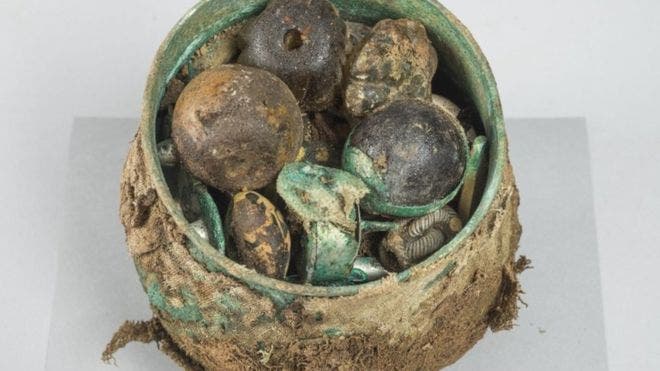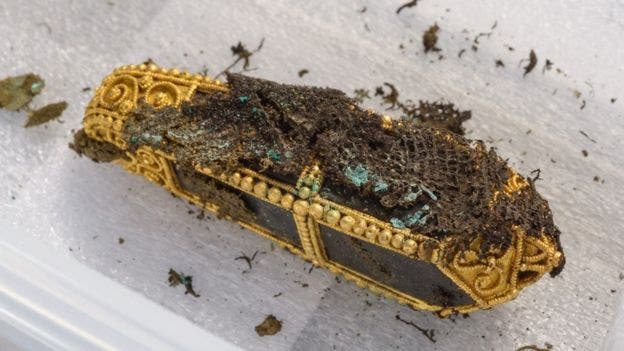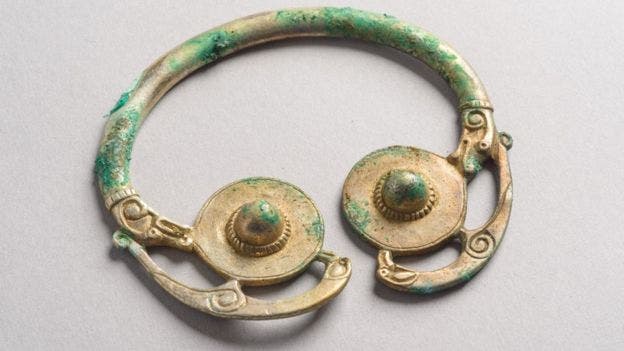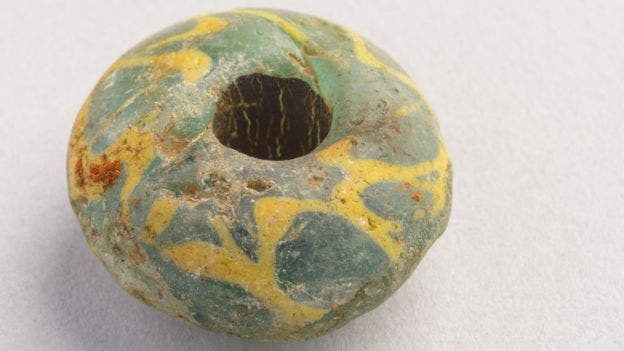The first images of Viking treasure, stashed in a pot more than 1,000 years ago and buried in a field in Galloway, have been made public by the conservators working to preserve them. The items, including six silver disk brooches, a gold ingot and Byzantine silk, are not currently on display.
Metal detectorist Dered McLennan found the hoard in Galloway in 2014. Since then a lot of effort has been put into removing and preserving the pot and items, dated from the 9th or 10th century BC.

The pictures give the public a chance to see the items for the first time as they are not currently on display.
Image credits Historic Environment Scotland.
And it’s a literal pot of gold. Inside, archaeologists found six silver Anglo-Saxon disc brooches and one from Ireland, silk traced back to Byzantium (modern-day Istanbul,) a gold ingot as well as gold and crystal objects carefully wrapped in pieces of cloth. Historic Environment Scotland are working together with the Treasure Trove Unit and the Queen’s and Lord Treasurer’s Remembrancer (QLTR) to fund the exhaustive conservation efforts.
“Before removing the objects we took the rather unusual measure of having the pot CT scanned, in order that we could get a rough idea of what was in there and best plan the delicate extraction process,” said Richard Welander of Historic Environment Scotland.
“That exercise offered us a tantalising glimpse but didn’t prepare me for what was to come.”
“These stunning objects provide us with an unparalleled insight to what was going on in the minds of the Vikings in Galloway all those years ago. They tell us about the sensibilities of the time, reveal displays of regal rivalries, and some of the objects even betray an underlying sense of humour, which the Vikings aren’t always renowned for!” he added.
Stuart Campbell of the Treasure Trove Unit, said there was further research to be done on the items.
“The complexity of the material in the hoard raises more questions than it answers, and like all the best archaeology, this find doesn’t give any easy answers,” he said.
“Questions about the motivations and cultural identity of the individuals who buried it will occupy scholars and researchers for years to come.”
The artifacts are now in the care of the Treasure Trove Unit, who are assessing its value on behalf of the QLTR. After this, the hoard will be offered to Scottish museums and the finder will be eligible for the market value of the items — a cost that the museums will cover.

This beautifully crafted artefact might just be the crown jewel of the hoard.
Image via Santiago Arribas Pena.
However, it’s been estimated that this might amount up to £1m in order to do so — a hefty price-tag for any museum.
The hoard’s discovery is also set to feature on the 24th of March in BBC’s latest episode of Digging for Britain hosted by Dr Alice Roberts.











